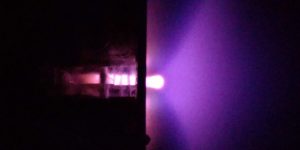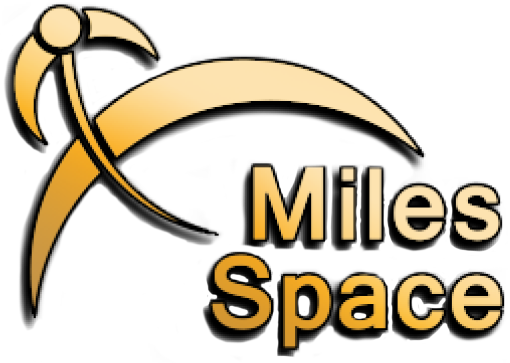Inexpensive. Powerful. Safe.
Water is an excellent source of power for the future


ConstantQ™ Water propulsion offers:
- High performance
- Non-toxic (low safety risk)
- Ease of transport / handle on ground
- Ease of fueling / refueling
- Low handling and
- Manufacturing costs
- Easily added to ride share
- Excellent fuel economy
- Powerful thrust
Miles Space now offers low cost primary or secondary thrusters to satisfy the pending FCC regulations on maneuverability.
UPDATE: We are currently working on features to force the operating frequency and duty cycle, which significantly affects power consumption and mass flow rate. More information on this will be available after completion of our upcoming TBA thrust testing campaign.
The ConstantQ™ family of thrusters use a pulsed electrostatic cycle to enable a variety of Earth-orbiting and deep space missions using water propellant. Test results show water’s vapor pressure and its plasma speciation are especially useful to this operating cycle.
A ConstantQ™ thruster has:
- a plasma formation region containing spark electrodes
- two exhaust ports, each ringed by acceleration electrodes
- a single power supply providing spark and acceleration power

Vapor enters the plasma formation region, expanding and changing pressure on its path towards the exhaust ports. Paschen’s law ensures a spark occurs within the vapor at the point where the supply voltage meets the pressure on the Paschen curve.
Each exhaust port is ringed with high voltage electrodes. One exhaust port’s voltages act to focus and extract positive ions from the plasma. The other affects electrons.
Electrons, being far less massive than ions, leave the plasma before ions, generating thrust from their interaction with the acceleration electrodes. Once outside the thruster, the electrons form a virtual cathode that pulls upon the ions remaining within the thruster.
As the ions leave, thrust is obtained from acceleration electrodes. However, the ions also derive kinetic energy from the virtual cathode, slowing the exhaust electrons and even causing electrons to flow back toward the thruster. This gives an increased acceleration voltage upon the ions, expanding the classic Child-Langmuir limits for space-charge flow rate and thrust density.
As the ions exit the thruster, they meet the returning electrons, neutralizing the plasma. With water vapor, the interface between exiting ions and returning electrons appears as a white-hot sphere 5-8mm outside the ion’s exhaust port. This phenomenon is believed to be due to the presence of multiple ion species with different velocity profiles. In the image below, the two exhaust ports are shown, with the electron port on the left and the ion port on the right. Note the distinctly different exhaust appearances of the two.
A resonance occurs between the incoming gas pressure, spark push back, and plasma drain rate through the exhaust ports (as driven by the supply’s high voltage which can be varied to align with mission Isp). The ConstantQ™ uses a very specific geometry to drive this resonance, minimize wear, reduce power supply complexity, and reduce flight computing demands.
ConstantQ™ thrusters have produced thrust using water vapor, Xenon, Argon, Krypton, Iodine, and air.
